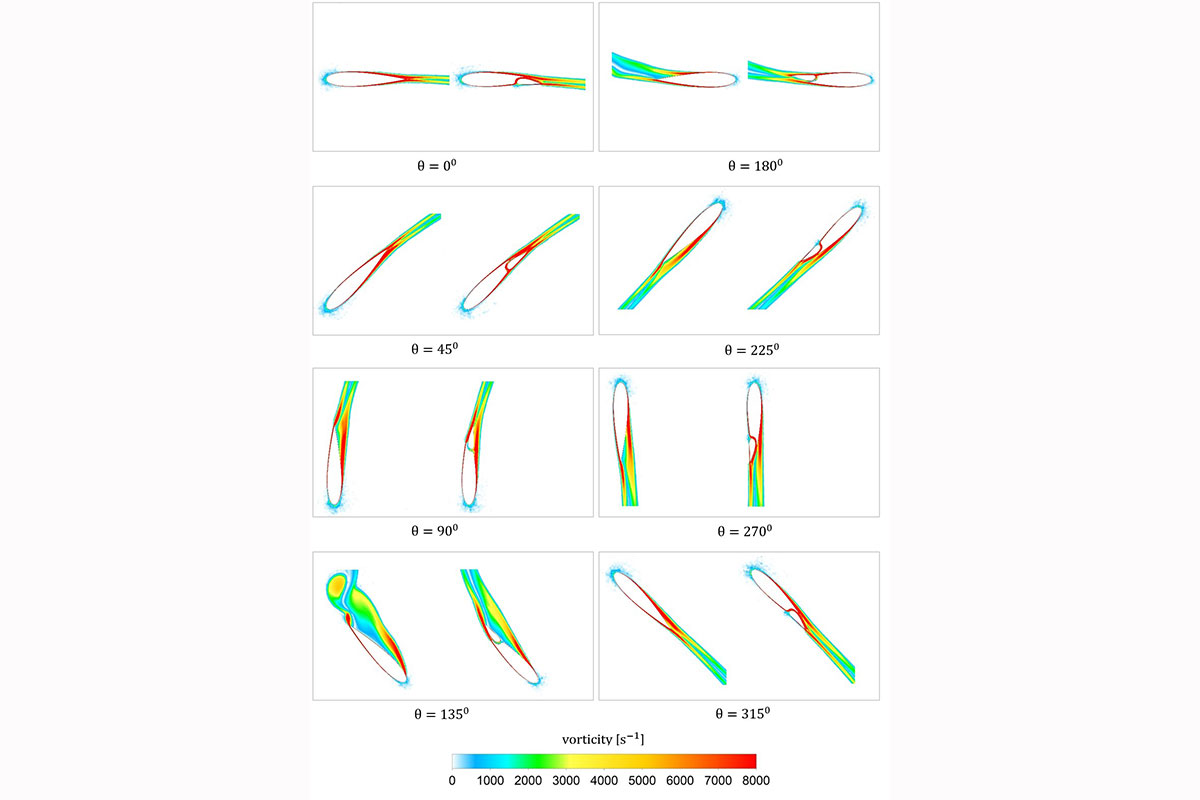Performance Enhancement of a Vertical Axis Wind Turbine using a Slotted Deflective Flap at the Trailing Edge
Project Details
- Student(s): Carla Attie
- Advisor(s): Dr. Michel El-Khoury and Dr. Amne El-Cheikh
- Department: Industrial & Mechanical
- Academic Year(s): 2021-2022
Abstract
Vertical axis wind turbines (VAWTs) exhibit dynamic stall under operational conditions which causes boundary layer separation from the surface of the blade. This hinders the turbine’s overall performance in which the turbine displays low efficiency, aerodynamic losses, and vibration and noise generation. The aim of this study is to optimize the performance of an H-type Darrieus VAWT by employing a single-slotted deflective flap at the trailing edge of the blade. To optimize the turbine’s performance, Computational Fluid Dynamics (CFD) and Design Of Experiments (DOE) methods are utilized simultaneously for time-saving purposes. The design parameters optimized for the NACA 0018 airfoil are the flap’s gap (∆y), overlap (∆x), and deflection angle (δf). The influence of each parameter on the performance of the VAWT are determined by DOE, which yields the optimum combination of design parameters for this H-rotor VAWT as ∆x = 2 mm, ∆y = 0.5 mm, and δf = 90 at TSR 3 where two-dimensional (2D) and three-dimensional (3D) CFD simulations yield turbine power increments of 27 % and 19 %, respectively. The flow characteristics of the 2D and 3D turbine models with slotted blades, developed using ANSYS Fluent R2020, demonstrated a delay in boundary layer separation and a reduction in vortices shedding due to the high-pressure flow through the slot, which in return reenergizes the boundary layer. The results from this study indicate an improved design of an H-rotor VAWT.
Publications
- Attie C., El-Cheikh, Nader J., El-Khoury M. Performance enhancement of a vertical axis wind turbine using a slotted deflective flap at the trailing edge. Energy Conversion Management, 273: 116388, 2022. https://doi.org/10.1016/J.ENCONMAN.2022.116388.
